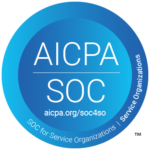This article was updated on July 9, 2025 following the passage of the One Big Beautiful Bill.
When I first wrote about the potential risks of federal Medicaid policy changes, I hoped this post might serve as a warning—a way to prepare in case the proposed legislation became reality.
Now it has.
The “One Big Beautiful Bill” is officially signed into law, and the impacts on hospitals, particularly those serving large Medicaid populations, are no longer theoretical. The bill brings over $1 trillion in healthcare spending cuts over the next decade, with major changes to Medicaid eligibility, reimbursement structures, provider taxes, and coverage for undocumented immigrants.
But while the challenges are real, I believe hospitals that act quickly—and strategically—can adapt to this new environment and even uncover new opportunities for support and innovation.
I want to walk through what this means for hospitals with the goal to offer a practical framework for leaders navigating both opportunity and uncertainty.
Hospital Margins: A Positive Trend with Ongoing Challenges
Hospital financial performance rebounded in 2023, with total margins rising to 6.4% and operating margins to 5.2%. These improvements reflect stabilization following pandemic-related disruptions and cost pressures. However, hospitals with a high share of Medicaid patients continue to see lower operating margins (2.3%) compared to those with more commercially insured patients (7.0%). This underscores the unique financial pressures faced by safety-net and rural hospitals that play a critical role in serving low-income populations.
What’s Changing in Medicaid Policy?
Here are some of the most critical changes for hospitals to understand:
-
-
Work Requirements and Redeterminations
Starting December 31, 2026, able-bodied adults aged 19–64 must complete 80 hours/month of work, volunteering, or job training to remain Medicaid eligible. Redeterminations will move from annual to biannual. These changes are expected to result in over 7.8 million people losing coverage by 2034. -
New Cost-Sharing for Patients
Beginning October 2028, Medicaid enrollees earning between 100–138% of the federal poverty level may be required to pay up to $35 per visit. This could increase delays in seeking care and put additional pressure on emergency departments and safety net services. -
Restrictions on Provider Taxes
States will face a phased cap on provider taxes—dropping from 6% to 3.5% of patient revenue by 2034. This is a big deal for states that have relied on these taxes to draw down additional federal funding to support Medicaid reimbursement. -
End of Federal Match for Undocumented Care
As of the end of 2026, states that choose to cover undocumented immigrants under Medicaid must do so using state-only funds. While this may not affect all hospitals directly, it could lead to increases in uncompensated care in states with large undocumented populations. -
DSH Payment Reductions and ACA Subsidy Expiration
Disproportionate Share Hospital (DSH) payments will be reduced, and enhanced ACA subsidies are now set to expire at the end of 2025 unless further congressional action is taken.
-
These policy shifts could have major financial consequences—particularly for hospitals in expansion states, those with thin margins, and rural facilities. Some projections suggest rural hospitals could see up to a 20% cut in Medicaid reimbursement, with margin declines of 19% or more in expansion areas.
New Funding Opportunities and Relief Programs
Tucked inside the bill is a $50 billion Rural Health Transformation Program, providing a potential lifeline for qualifying hospitals. There’s a catch: states (not hospitals) must apply for these funds, and the deadline is December 31, 2025.
That means now is the time for hospital leaders—especially those in rural areas—to work closely with their state Medicaid agencies to ensure their needs are reflected in state funding applications.
These funds can support everything from telehealth and remote monitoring to workforce recruitment and technology investments, but hospitals need to be organized, data-driven, and collaborative to take advantage of it.
States may have the option to reallocate funds or create new programs to offset federal cuts, but this will depend on state budgets and priorities. States must use funds for at least 3 of the following:
-
- Evidence-based chronic disease prevention and management
- Direct payments to health care providers (must be enrolled in Medicaid, CHIP, or Medicare)
- Consumer-facing technology solutions
- Training/assistance for technology adoption (e.g., remote monitoring, AI)
- Recruiting/retaining clinical workforce (with five-year rural service commitment)
- Technical assistance, software, hardware for cybersecurity, efficiency, outcomes
- Addressing gaps in rural care across the continuum (preventive, acute, post-acute)
- Opioid/substance use disorder and mental health treatment access
- Developing value-based care or alternative payment models
- Other CMS-approved uses
Hospitals should engage with state Medicaid agencies and advocate for targeted support or supplemental payments, especially for safety-net and rural providers. If you are a health care system with several hospitals you can submit a combined data and proposal. Work with your state to ensure all your rural hospitals are included in the application.
Distribution Formula
Total Funding: $10 billion per year (2026–2030), totaling $50 billion.
Formula:
-
- 50% of funds are distributed equally among all states with approved applications.
- 50% are distributed at CMS discretion based on factors such as:
- State’s rural population
- Number of rural health facilities
- Financial situation of rural hospitals
- Medicaid expenditures on rural hospitals (used as a proxy in some analyses)
- Once state is approved, it receives payments for all five program years.
Example: If a rural 25 bed hospital in Kentucky engages with state agency, meets state requirements, prepares required documentation and obtains approval. If all 50 states applied the total national fund would be distributed 50% to all 50 states, and the other 50% distributed based on each state’s Medicaid rural hospital expenditures. Kentucky would get $1.125 billion over 5 years (equal share of $500 million and $625 million for Medicaid based share), estimated rural hospitals in Kentucky is around 100 for a 25 bed hospital if distributed evenly would receive an annualized amount of $2.25 million per year. This will be based on state allocation.
Other Potential Funding Streams
Hospital associations and advocacy groups are urging Congress to extend ACA subsidies and explore additional relief for hospitals facing disproportionate Medicaid shortfalls.
Some states may create emergency funds or seek waivers to support hospitals, but resources are likely to be limited
The new law moves forward with DSH payment reductions that had been delayed under previous legislation.
How Hospitals Can Get Ahead of These Changes
The window to prepare is narrow, but there are meaningful steps hospitals can take—starting today:
1. Assess Your Medicaid Exposure
Evaluate how policy changes will impact your hospital’s margins. Use your current payer mix, service line data, and population trends to model the financial impact of eligibility losses, new cost-sharing requirements, and DSH payment reductions. Incorporate predictive analytics to forecast long-term effects on revenue and uncompensated care.
2. Engage State Agencies and Shape Funding Proposals
With states controlling access to Rural Health Transformation Program funds, proactive engagement is essential. Reach out to your Medicaid office now to understand the application process and ensure your hospital or system is included. If you operate multiple facilities, prepare coordinated proposals and advocate for your priorities at the state level.
3. Analyze and Segment Your Medicaid Population
Leverage Medicaid claims and enrollment data to build a comprehensive picture of your Medicaid population. Use risk stratification to identify high-need subgroups such as patients with serious mental illness, high ED utilization, or unstable housing.
4. Strengthen Care Coordination and Preventive Strategies
Reduce preventable ED visits and readmissions by investing in care management, discharge planning, and better coordination with Medicaid managed care organizations. These efforts are especially important for vulnerable subgroups and can reduce downstream financial strain as coverage gaps emerge.
5. Invest in Data Infrastructure and Technology
If you haven’t already, now is the time to enhance your hospital’s ability to collect, share, and act on population-level insights. From dashboards and predictive models to telehealth and AI-enabled tools, these capabilities will strengthen funding applications and operational agility. Monitor trends in utilization and disparities across patient groups to adjust care strategies in real time.
6. Communicate with Patients and Community Partners
Prepare clear, timely outreach to Medicaid patients who may be affected by redeterminations or new eligibility rules. Work with community organizations and MCOs to support patients through the changes—and position your hospital as a trusted guide in a confusing environment. Internally, keep staff informed and aligned around messaging, compliance, and patient navigation.
By diving deep into your Medicaid population with these strategies, you can identify patterns, anticipate coverage disruptions, and plan targeted interventions. This analysis creates a foundation for action—helping hospitals align care delivery with emerging needs and navigate policy uncertainty with greater precision.
To move from insight to impact, hospitals should also consider operational strategies that reinforce these efforts. The following action steps can help leaders translate population-level insights into real improvements in care and financial performance:
-
- Strengthen Care Coordination: Focus on reducing preventable emergency department visits and hospital readmissions by leveraging care management programs, discharge planning, and collaboration with Medicaid managed care organizations. Effective care transitions and follow-up can improve outcomes and reduce unnecessary costs.
- Model Financial Impact Scenarios: Use analytics to model the potential impact of proposed policy changes using patient data.
- Prepare for Patient Communication and Outreach: Start to think about a communication plan to inform Medicaid patients about potential changes in eligibility, coverage, or provider networks. Work with your vendors to help you.
This is a defining moment for hospital leaders.
This law will reshape the healthcare landscape over the next decade—and how hospitals respond will determine whether they face compounding risk or uncover a sustainable path forward.
If you’re leading a rural hospital or a safety-net provider, you can’t afford to wait and see what happens. Start preparing your data, forming your partnerships, and engaging with your state now. Because the decisions made in the next 6–12 months could shape your next 6–12 years.










